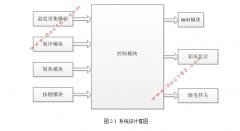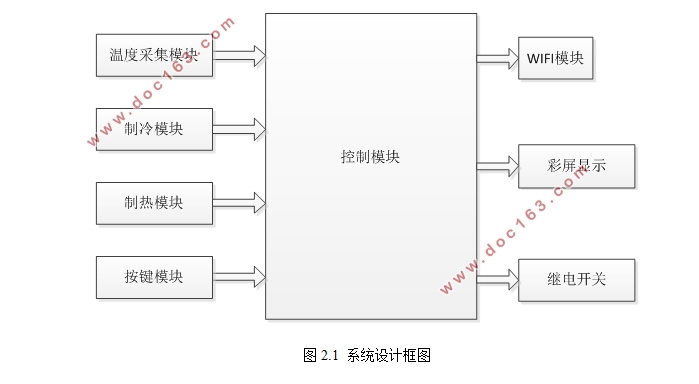智能空调系统的设计

1.无需注册登录,支付后按照提示操作即可获取该资料.
2.资料以网页介绍的为准,下载后不会有水印.资料仅供学习参考之用.
密 惠 保
智能空调系统的设计(论文18000字)
摘要:为了满足室内空调便捷、高效地使用,加上现如今空调的快速发展,本文设计了一种智能空调系统。本设计用STM32F103ZET6单片机作为主控制芯片,由TFT彩屏来作为显示,并且由DS18B20温度采集模块、制冷制热模块、触摸屏模块以及通过WIFI连接的手机APP组成。本文所阐述的智能空调不仅可以实现温度值的显示,还可以将数据实时发送到手机APP上并且通过触摸屏或手机APP操作,适合室内办公及居住者。
关键词:WIFI;STM32单片机;智能空调
The Design of Intelligent Air-Conditioning System
Abstract:In order to meet the convenience and efficient use of indoor air conditioning, combined with the rapid development of today's air conditioning, this thesis designs an intelligent air conditioning system.The design uses STM32F103ZET6 single-chip microcomputer as the main control chip, TFT color screen as the display, and consists of DS18B20 temperature acquisition module, refrigeration and heating module, touch screen module and mobile APP connected through WIFI.The intelligent air conditioner described in this paper can not only display the temperature value, but also send the data to the mobile phone APP in real time and operate through the touch screen or mobile phone APP, which is suitable for indoor office and occupants. [来源:http://www.think58.com]
Keywords:WIFI;STM32 MCU;Intelligent Air-Conditioning
[版权所有:http://think58.com]

目 录
1.绪论 1
1.1设计背景 1
1.2智能空调国内外研究现状及发展趋势 1
1.2.1 国内研究现状 1
1.2.2国外研究现状 2
1.2.3发展趋势及问题 2
1.3 论文主要内容 3
2.系统总体方案设计 3
2.1设计要求 3
2.2设计思路 3
3.系统硬件设计 4
3.1单片机控制模块 4
3.1.1方案比较 4
3.1.2方案选择 4
3.1.3 STM32F1032ZET6在本系统中的应用 4
3.2 显示模块 5
3.2.1.方案比较 5
3.2.2方案选择 5
3.2.3 TFT彩屏工作电路 6
3.3温度采集模块 6
3.3.1方案比较 6
3.3.2方案选择 7
3.3.3 DS18B20工作电路 7
3.4 按键模块 7
3.4.1方案比较 7
3.4.2方案选择 8
3.4.3 TFTLCD模块上的触摸屏工作电路 8
3.5 制冷制热模块 9
3.5.1方案比较 9
3.5.2方案选择 9
3.5.3 制冷制热模块工作电路 9
3.6 无线通信模块 10
3.6.1方案比较 10
3.6.2方案选择 10
3.6.3 ESP8266模块与单片机的连接 11
4.系统软件设计 11
4.1 系统主程序流程框图 11
4.2模式设置流程图 12
4.3模式程序设计 14
4.3.1温度程序设计 14
4.3.2 ESP8266程序设计 15 [资料来源:http://THINK58.com]
4.4手机APP的设计 16
4.4.1开发环境平台选择 16
4.4.2功能分析 16
4.4.3界面设计 16
5.系统的调试 18
5.1软件调试 18
5.1.1 液晶代码调试 19
5.1.2 触摸屏代码调试 20
5.2 硬件调试 21
5.2.1 WIFI模块调试 21
5.2.2 制冷制热控制模块调试 23
5.2.3 温度模块调试 24
5.3手机APP调试 25
5.3.1 软件使用 25
5.3.2 界面调试 25
5.3.3 通信调试 26
5.4软硬联调调试结果 27
5.5实验测试及误差分析 28
5.5.1实验测试 28
5.5.2误差分析 28
6.总结与展望 30
参考文献 31
致谢 33 [来源:http://www.think58.com]
